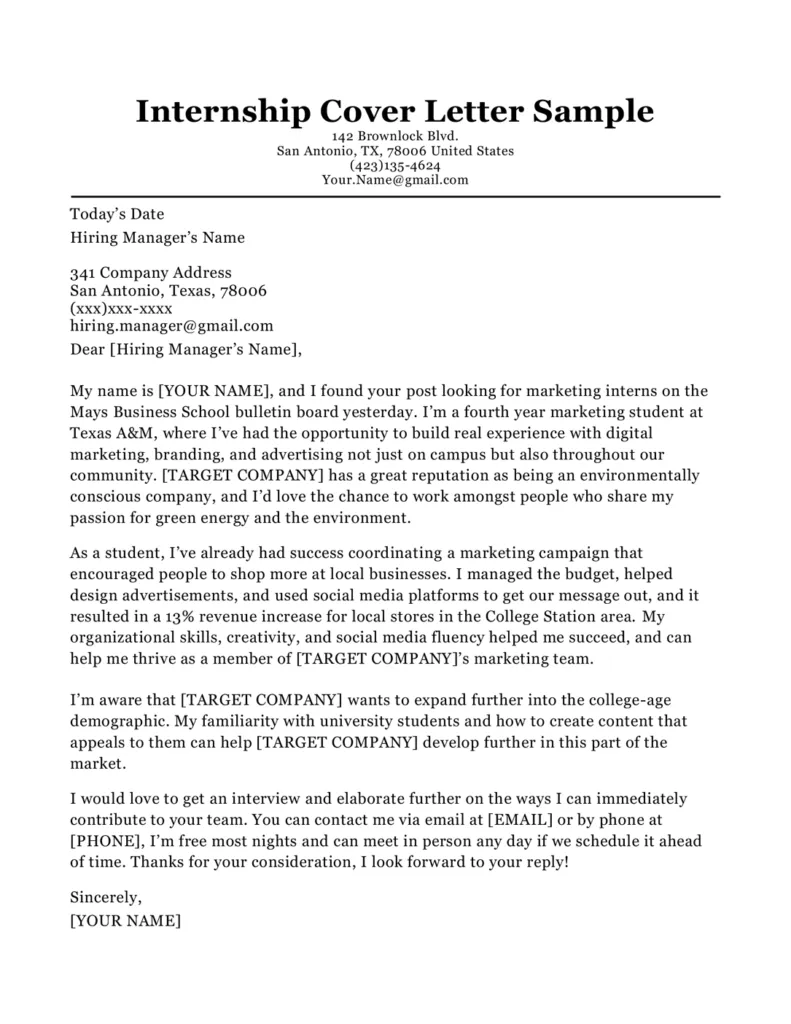Cover Letter Basics
A cover letter is a crucial document accompanying your resume when applying for a job. It provides an opportunity to introduce yourself, highlight your skills and experience, and express your interest in a specific position. Unlike a resume, which provides a snapshot of your qualifications, a cover letter allows you to tell a story and demonstrate how your skills align with the employer’s needs. Mastering the art of the cover letter can significantly increase your chances of landing an interview, especially as a college student or recent graduate navigating the competitive job market.
Understanding the Purpose of a Cover Letter
The primary purpose of a cover letter is to persuade the hiring manager that you are a suitable candidate for the job. It serves as a personalized introduction, allowing you to elaborate on your qualifications and explain why you are a good fit for the company and the role. It allows you to go beyond the bullet points of your resume and make a compelling case for why you deserve an interview. A well-crafted cover letter shows that you have researched the company, understand the job requirements, and are genuinely interested in the opportunity. The best cover letter sample always shows all of this.
Key Components of a Cover Letter
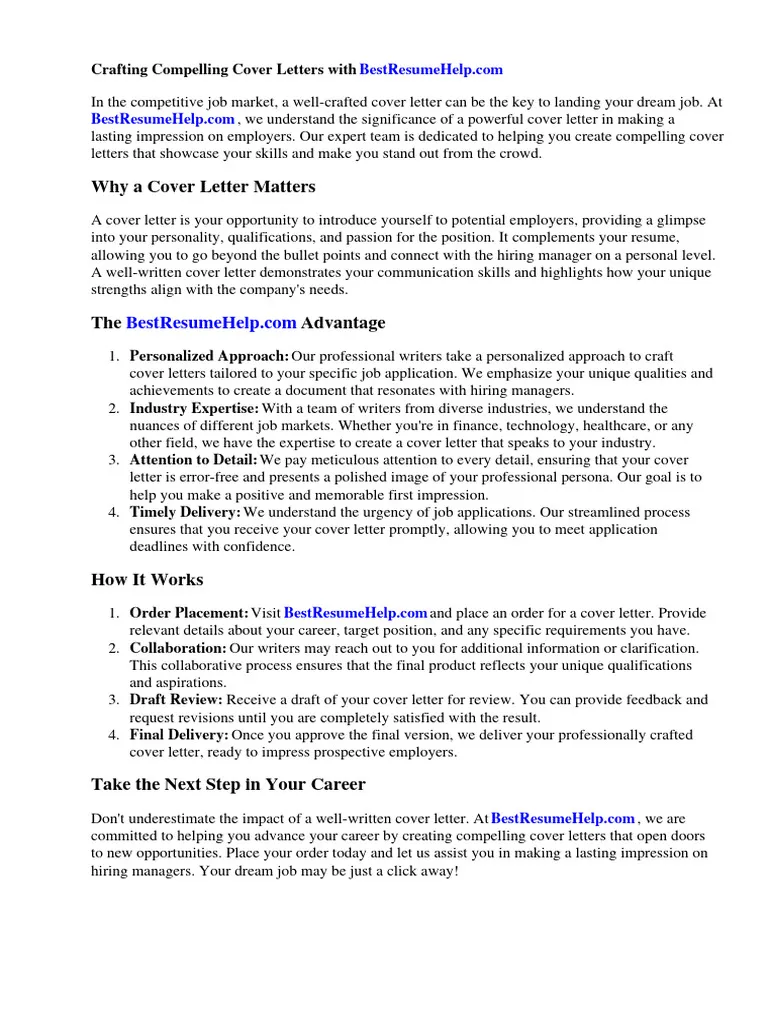
A standard cover letter typically includes several key components. First is the header, containing your contact information and the date. Next comes the salutation, addressing the hiring manager by name if possible. The introduction grabs the reader’s attention and states the position you are applying for. The body paragraphs highlight your relevant skills and experiences, using specific examples to demonstrate your qualifications. The closing summarizes your interest and includes a call to action, such as requesting an interview. Finally, the cover letter should be professionally signed.
Formatting Your Cover Letter
Formatting is just as important as content. Use a professional font like Times New Roman or Arial, and ensure your letter is easy to read. Keep the tone formal and avoid slang or casual language. The cover letter should be concise, ideally no more than one page. Use clear and concise language, and break up long paragraphs to improve readability. Proofread carefully for any grammatical errors or typos. A well-formatted cover letter demonstrates professionalism and attention to detail, which are essential qualities for any college student seeking employment.
Cover Letter Sample for College Students
A cover letter for a college student differs slightly from those of more experienced professionals. It’s crucial to emphasize academic achievements, relevant coursework, extracurricular activities, and any internships or part-time jobs. Highlight transferable skills such as communication, teamwork, problem-solving, and leadership. Provide specific examples that showcase these skills. A strong cover letter for college students demonstrates a willingness to learn, adaptability, and a genuine interest in the field. Remember, cover letter sample for college student is just a guide. You need to modify to fit yourself.
Header and Contact Information
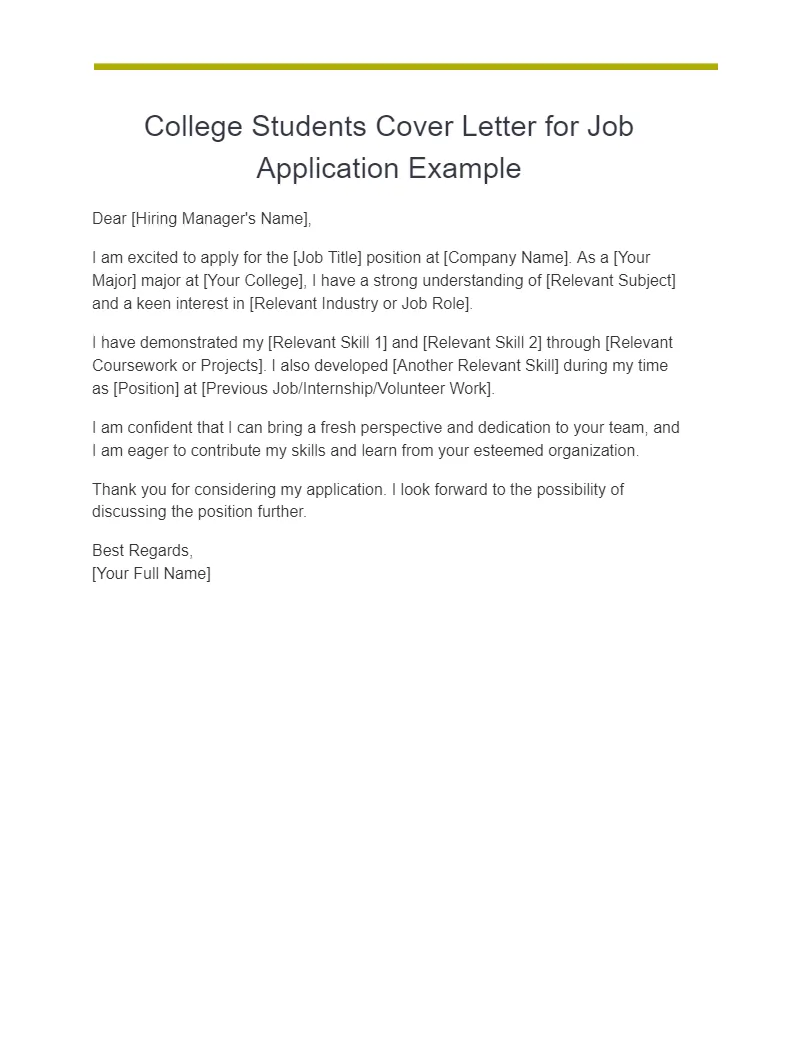
Start with your contact information: your name, address, phone number, and professional email address. Include the date and the hiring manager’s name (if known), title, and company address. Ensure your email address is professional. This section is the first thing the recruiter sees, so it should be clean and easy to read. Correct formatting is a must. Always double-check for accuracy to prevent miscommunication.
Salutation and Introduction
Address the hiring manager by name if possible; ‘Dear Mr./Ms. Last Name’ is preferable. If you can’t find a name, use a general greeting like ‘Dear Hiring Manager’. In your introduction, state the position you’re applying for and how you learned about the opportunity. Briefly mention why you’re interested in the role and the company. This sets the tone for the rest of your letter and captures the reader’s attention from the start. A strong opening can greatly increase the likelihood of the reader continuing.
Highlighting Relevant Skills and Experience
This section is where you showcase your skills and experience. Use specific examples to illustrate your abilities. Describe how your coursework, projects, internships, or extracurricular activities have equipped you with the skills required for the job. Quantify your achievements whenever possible. For example, instead of saying ‘Managed social media accounts,’ say ‘Increased social media engagement by 30% in six months.’ Tailoring this section to match the job description is key. Show the hiring manager that you can deliver results.
Tailoring Your Letter to the Specific Job
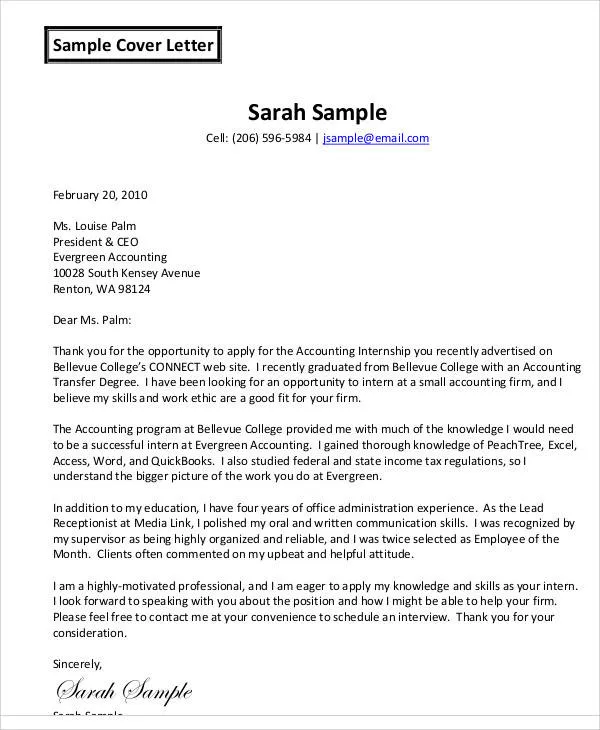
Carefully review the job description and identify the key skills and qualifications the employer is seeking. Customize your cover letter to address these specific requirements. Use the same keywords and phrases from the job description to show that you understand the role and that your skills align with the needs of the company. Research the company to understand its values and culture. Tailoring your letter demonstrates that you are genuinely interested in the opportunity and have taken the time to understand the role. A cover letter sample must have this tailored.
Showcasing Academic Achievements
As a college student, academic achievements are a significant part of your qualifications. Mention your GPA if it is above average, relevant coursework, and any academic honors or awards. Highlight any projects or research you have completed that align with the job requirements. Academic achievements demonstrate your dedication, intellectual capacity, and ability to learn. Make sure to frame these achievements in a way that shows their relevance to the job you’re applying for. A strong academic background will greatly help your cover letter sample.
Expressing Enthusiasm and Interest
Show genuine enthusiasm for the position and the company. Explain why you are interested in the specific role and what attracts you to the organization. Research the company and mention something you admire about its mission, values, or recent achievements. Demonstrate that you are not just looking for any job, but specifically want to work for this company. Expressing enthusiasm shows the employer that you are motivated and passionate about the opportunity. An excellent cover letter sample has this.
Closing and Call to Action

In your closing paragraph, summarize your key qualifications and reiterate your interest in the position. Include a call to action, such as requesting an interview. Thank the hiring manager for their time and consideration. Provide your contact information again and state that you look forward to hearing from them soon. A strong closing leaves a lasting impression and encourages the hiring manager to take the next step in the hiring process. Always remember to say thank you for their time in the closing.
Proofreading and Finalizing Your Cover Letter
Proofread your cover letter carefully for any grammatical errors, typos, or inconsistencies. Ask a friend, professor, or career counselor to review your letter for feedback. Ensure the formatting is consistent and professional. Make sure your contact information is correct. A polished cover letter demonstrates attention to detail and professionalism, which are crucial for making a positive impression. Remember, a cover letter sample is good, but proofreading is a must.
Cover Letter Examples
Reviewing various cover letter samples can provide valuable insights into formatting, content, and tone. Find examples specific to your field and the types of jobs you are applying for. Pay attention to how other college students have highlighted their skills and experiences. Modify these examples to fit your own situation and experiences. Analyze the language used, the structure, and the overall approach of successful cover letters.
Cover Letter Sample 1
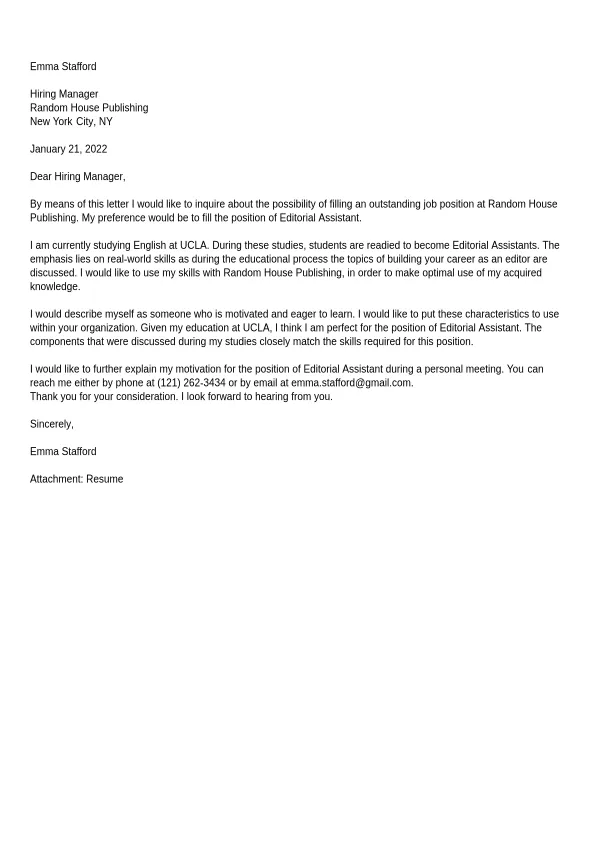
This sample would demonstrate an entry-level applicant showcasing relevant coursework and internship experience. The letter must show how skills gained in the academic setting translate to the professional world. The introduction captures the reader’s attention, the body highlights key skills, and the conclusion reiterates the applicant’s enthusiasm for the role.
Cover Letter Sample 2
Here, focus on highlighting extracurricular activities and leadership roles, demonstrating soft skills such as communication and teamwork. This sample may be tailored to those with more experience in leadership roles, such as being a club officer or team captain. This example would emphasize the ability to work in a team and take the initiative.
Cover Letter Sample 3
This sample shows academic achievements and research experience, highlighting technical skills and knowledge. This sample would be great for students looking to get hired as researchers. This sample shows how a cover letter sample can show off a candidate’s technical skills.
Common Mistakes to Avoid
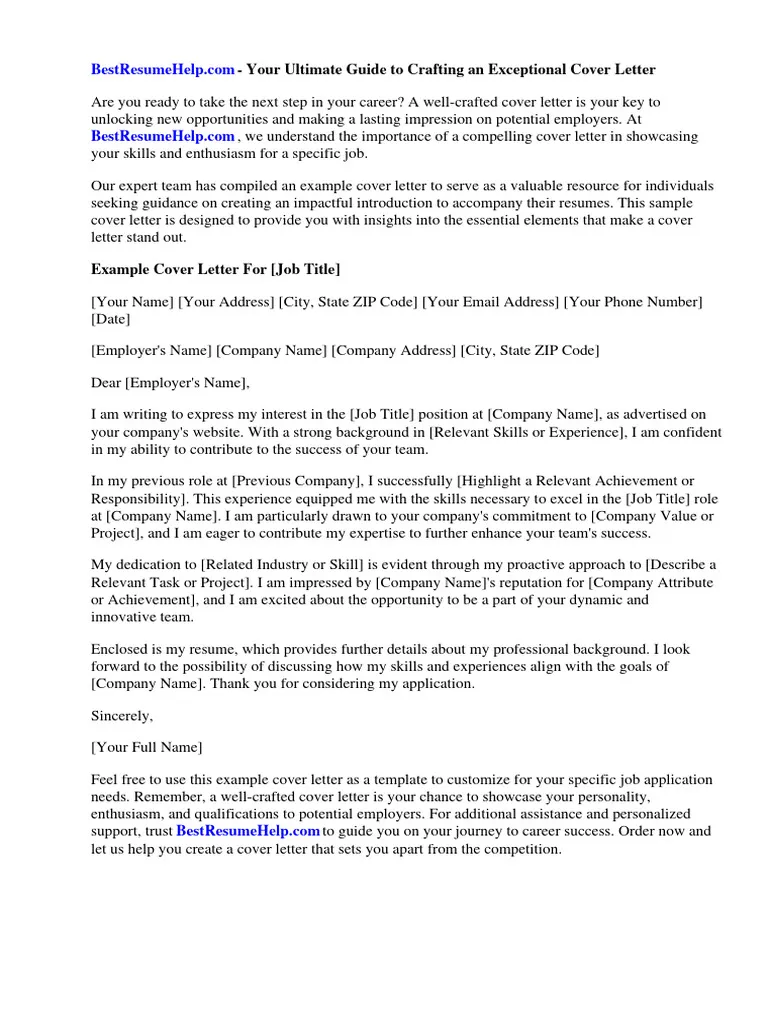
Several common mistakes can undermine the effectiveness of your cover letter. Avoid generic cover letters that are not tailored to the specific job or company. Do not include typos, grammatical errors, or formatting inconsistencies. Also, ensure that your letter does not contain irrelevant information. By avoiding these pitfalls, you can make a stronger impression.
Generic Cover Letters
Sending the same cover letter to multiple employers is a common mistake. Employers can tell when a cover letter is not tailored to their specific needs. Each cover letter should be customized to the job description and the company’s values. This demonstrates that you have researched the company and are genuinely interested in the opportunity. Generic cover letters will make you look like you are not interested, and not a good fit.
Typos and Grammatical Errors
Typos and grammatical errors can damage your credibility and make you appear unprofessional. Always proofread your cover letter carefully. Read it aloud to catch any mistakes. Have someone else review it as well. A polished, error-free cover letter shows that you pay attention to detail and take pride in your work. Never send a cover letter with these errors.
Lack of Customization
Failing to customize your cover letter to the specific job is a missed opportunity. Employers want to know why you are interested in their company and why you are a good fit for the role. Address the specific requirements of the job description, and highlight how your skills and experience align with the needs of the company. A lack of customization makes you appear less interested and less likely to be selected for an interview. Always tailor to the job.
Cover Letter Best Practices
Following cover letter best practices can significantly increase your chances of success. Research the company and the role before writing your letter. Customize your letter to match the job description and company values. Highlight your relevant skills and experiences using specific examples. Proofread carefully for any errors, and seek feedback from others. By following these best practices, you can write a cover letter that captures the attention of the hiring manager and helps you land an interview. A good cover letter sample is a must.
